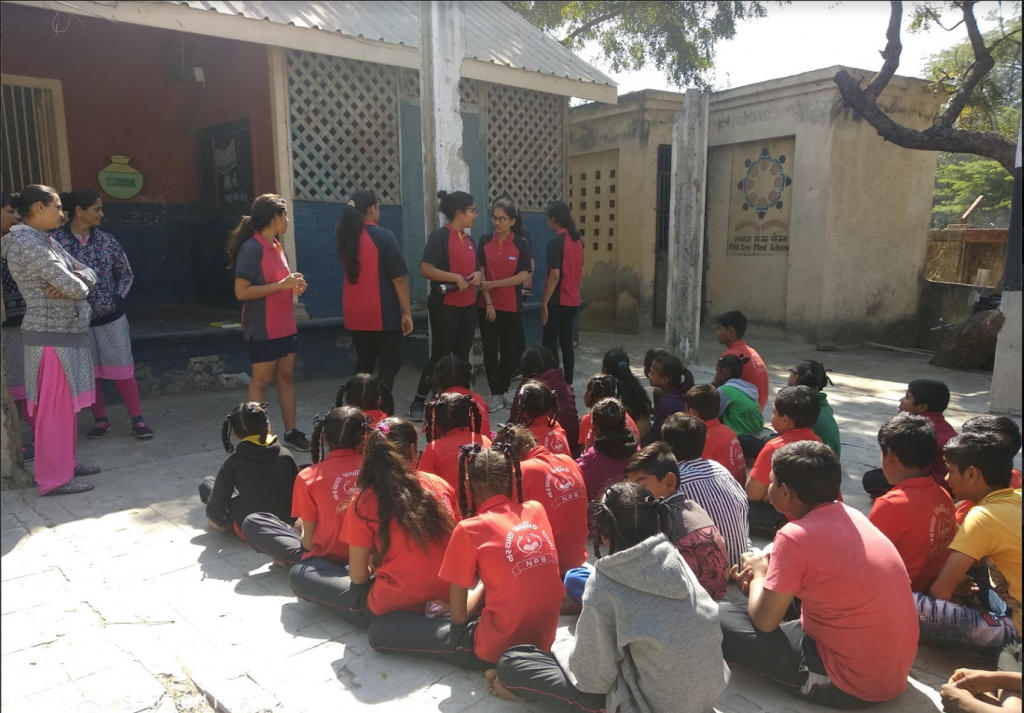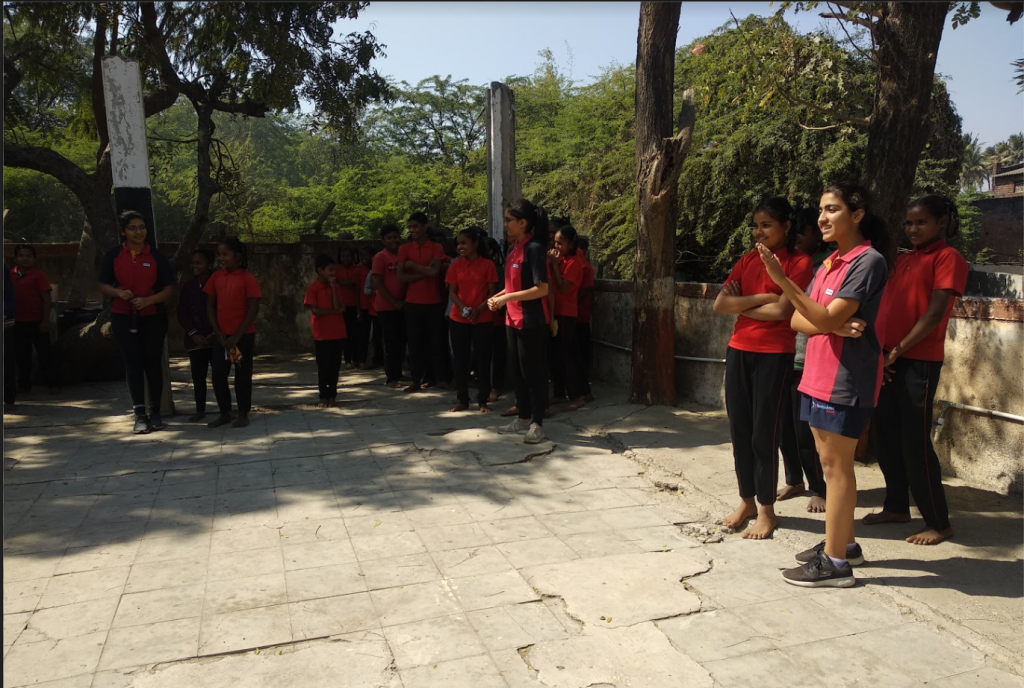We went to a government school in a group of 6 to conduct a session on gender equality for students from grades six to nine. We conducted activities to make them understand what discrimination is and the different types of inequalities faced by the different genders in our society. Our aim was to inform the students about the inequalities faced by different genders and how they could take a stand against it as well as educate their friends about it. I achieved learning outcomes 3, 5 and 6.
LO3: We created an agenda for the one-hour session that we had to lead as a group, where we organized explanations and games in an order that would help us make sense of the topic to the students. I found the initiation comparatively more difficult than the planning because it was difficult to get the students to participate at first. However, a warm-up activity helped us break the ice with the students and lead to them sharing their views more openly.
LO5: I can generally work cooperatively with others and for this experience, it was easy to work in the group because I knew the people in my group and I could discuss ideas with them easily. It is important to be able to work collaboratively because we would have to do tasks in groups in the future and it would make it easier for the group if everyone was open-minded to each other’s ideas as well as collaboratively be able to come to a decision. Teamwork was important for this experience because we were able to collect many different ideas for activities/explanations as well as different ways of presentation that we could use. It also helped us execute our planned agenda appropriately as we explained the topic as a group. The language barrier was a problem for some of us because we had to take the session in Gujarati and half of our group did not know how to speak Gujarati, so the others had to translate for them sometimes.
LO6: The issue we catered to was gender equality. This is an important issue because around the world, there are still many gender stereotypes, such as girls have to be fragile, boys can’t cry and many others, which hold back many people or even cause them to be insecure about themselves. It also leads to unequal treatment in various factors, such as salary, punishment, etc. Knowing about global issues helps me be more knowledgeable about the topic and apply it to my surroundings so that I can avoid part of activities that increase gender inequality.
In conclusion, this experience helped me develop the learner profiles communicator because we communicated our point to the students, as well as reflective because I reflected on the lack of gender inequality in the students’ communities as well as the presence of different types of inequalities in different communities. This activity helped the students of the government school understand more about gender inequalities, how they could educate their family members about it and how they could defend themselves if they face gender inequality. The highlight of this experience for me was how all of the students actively and enthusiastically participated in all the activities. Before I went there, I thought that there would be more gender inequality in villages, however, during the session, I learned that there is much less gender inequality and gender roles followed in their communities.


